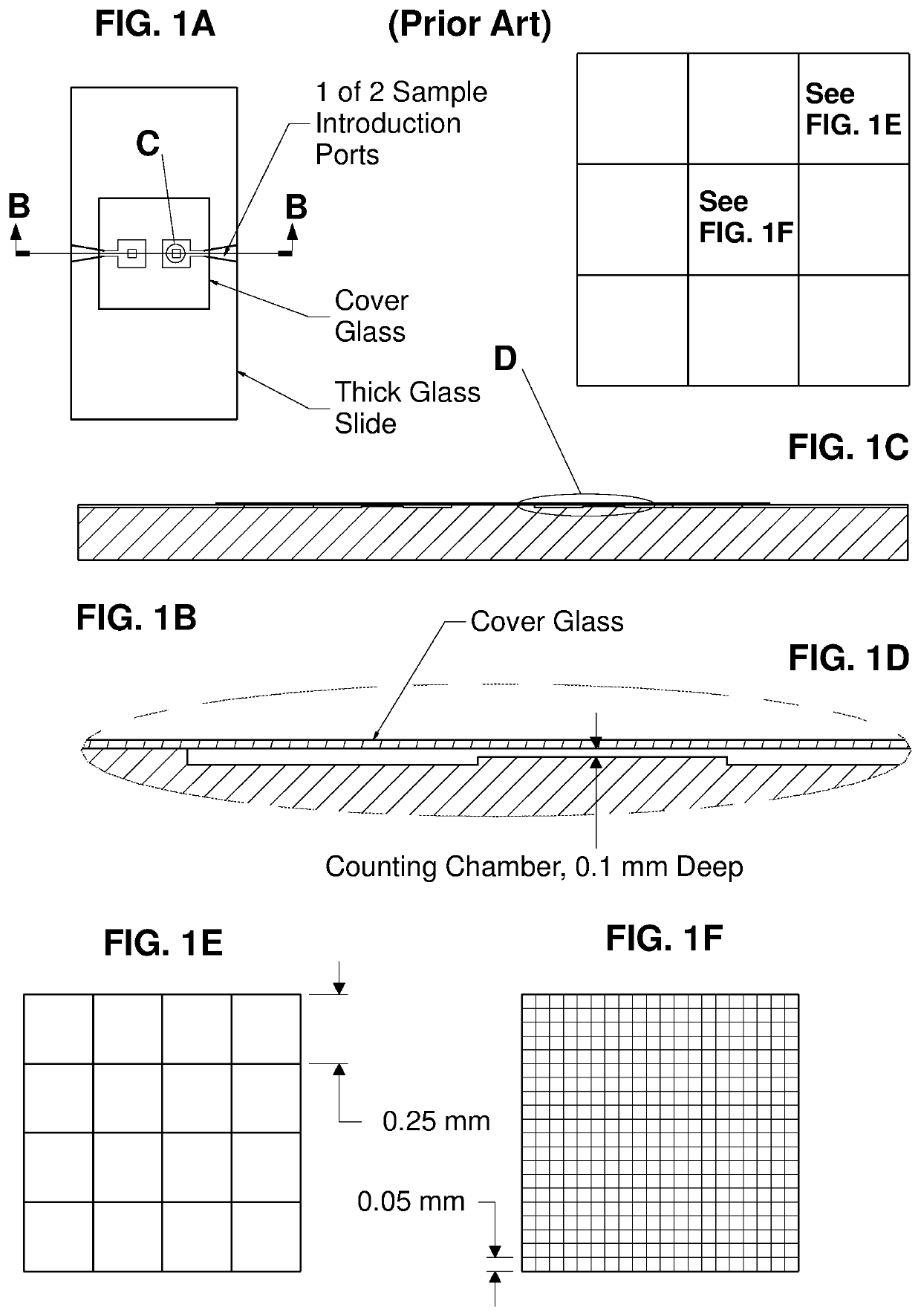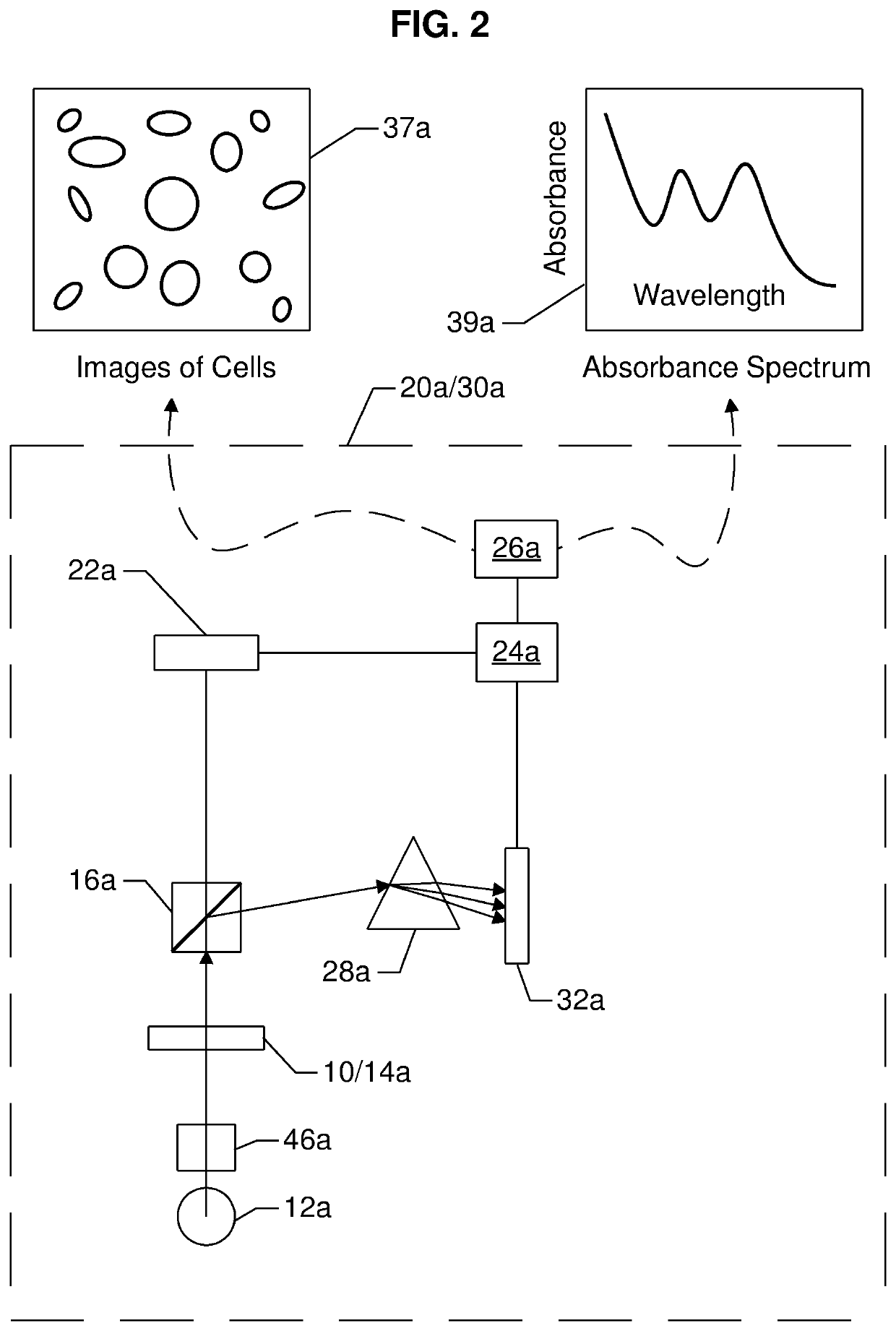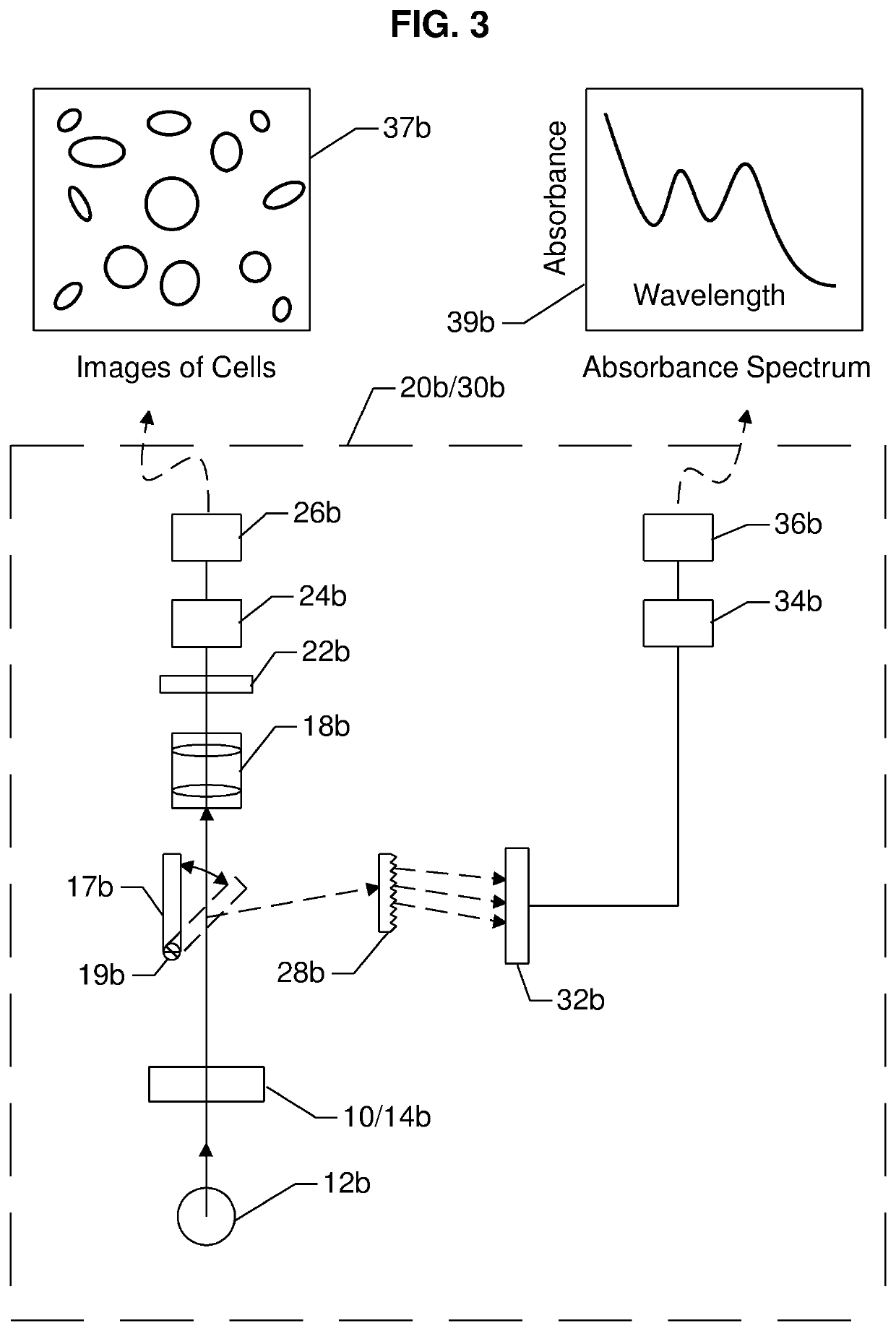Joint hematology and biochemistry point-of-care testing system
a point-of-care testing and joint technology, applied in the field of point-of-care testing (poct) system, can solve the problems of brain damage, blood clot formation, and certain tests that cannot be performed on serum or plasma
- Summary
- Abstract
- Description
- Claims
- Application Information
AI Technical Summary
Benefits of technology
Problems solved by technology
Method used
Image
Examples
first embodiment
[0212]a system 30a for measuring one or more analyte quantities per unit volume of blood (i.e., the concentration of the analyte) using spectroscopic technique, and one or more formed element quantities per unit volume of blood (i.e., a cell count) using an imaging technique, is illustrated in FIG. 2. System 30a comprises a source of EMR 12a, which may represent a polychromatic source of EMR or a plurality of monochromatic EMR. Depending on the source of EMR, a collimation system 46a may be used to produce substantially parallel rays of EMR for interrogating or illuminating the blood sample in an optical chamber (see 13 in FIGS. 10H & 10K) of a cartridge 10 (10 may be considered a generic cartridge, and could be at least one of 10A, 10B, 10C or 10D, or a similar cartridge described in the prior art) in a receptor 14a of an analyzer 20a (see FIGS. 8A-8C).
[0213]The EMR transmitted through the blood sample in the optical chamber 13 of a cartridge 10 is referred to as emerging EMR. The ...
second embodiment
[0236]a system 30b for measuring one or more analyte quantities per unit volume of blood (i.e., the concentration of the analyte) using a spectroscopic technique, and one or more formed element quantities per unit volume of blood (i.e., a cell count) using an imaging technique is illustrated in FIG. 3. The most significant differences when compared with system 30a are:[0237]1) instead of using a beam splitter 16a, a pivotal mirror 17b is used to direct EMR transmitted through the blood sample, to either detector 22b or detector 32b, depending on the position of the mirror;[0238]2) system 30b comprises a magnification system 18b for projecting a real enlarged image on to the detector 22b; and[0239]3) instead of a prism 28a, the EMR dispersing element is a transmission grating 28b.
[0240]The differences between the first set of emerging EMR and the second set of emerging EMR are: a) each set emerges from the sample at a different time, depending on the position of the pivotal mirror 1...
third embodiment
[0241]a system 30c is illustrated in FIG. 4. The most significant differences when compared with system 30b are:[0242]1) a bifurcated optical fiber comprising one or more strands of optical fiber is used as a beam splitter; and[0243]2) instead of a transmission grating 28b, the EMR dispersing element is a reflecting grating 28c.
[0244]The bifurcated optical fiber may be designed so that the magnitude of the first set of emerging EMR and the magnitude of the second set of emerging EMR are optimized to produce accurate measurements of the one or more cell counts and the one or more analyte concentrations.
[0245]A fourth embodiment of a system 30d is illustrated in FIG. 5. The most significance differences when compared to the first three embodiments 30a, 30b and 30c illustrated in FIGS. 2, 3 and 4 respectively are:[0246]1) multiple sources of EMR (12′ and 12d″ are shown as examples, but others may be arranged in a circular manner, with respect to an axis represented by the direction of...
PUM
| Property | Measurement | Unit |
|---|---|---|
| wavelengths | aaaaa | aaaaa |
| wavelengths | aaaaa | aaaaa |
| angle | aaaaa | aaaaa |
Abstract
Description
Claims
Application Information
 Login to View More
Login to View More - R&D
- Intellectual Property
- Life Sciences
- Materials
- Tech Scout
- Unparalleled Data Quality
- Higher Quality Content
- 60% Fewer Hallucinations
Browse by: Latest US Patents, China's latest patents, Technical Efficacy Thesaurus, Application Domain, Technology Topic, Popular Technical Reports.
© 2025 PatSnap. All rights reserved.Legal|Privacy policy|Modern Slavery Act Transparency Statement|Sitemap|About US| Contact US: help@patsnap.com



